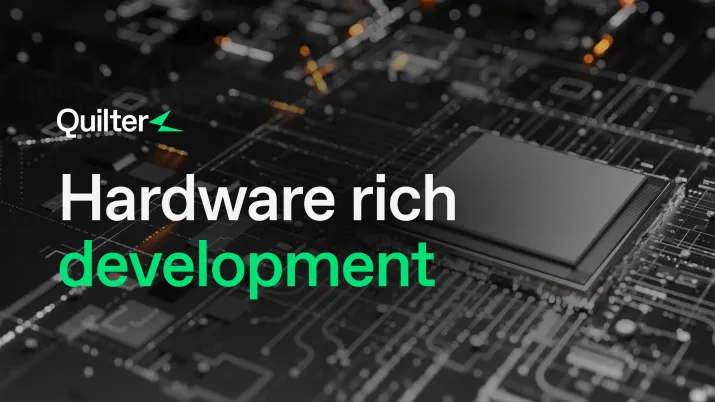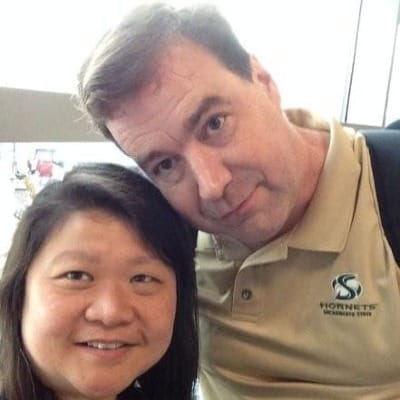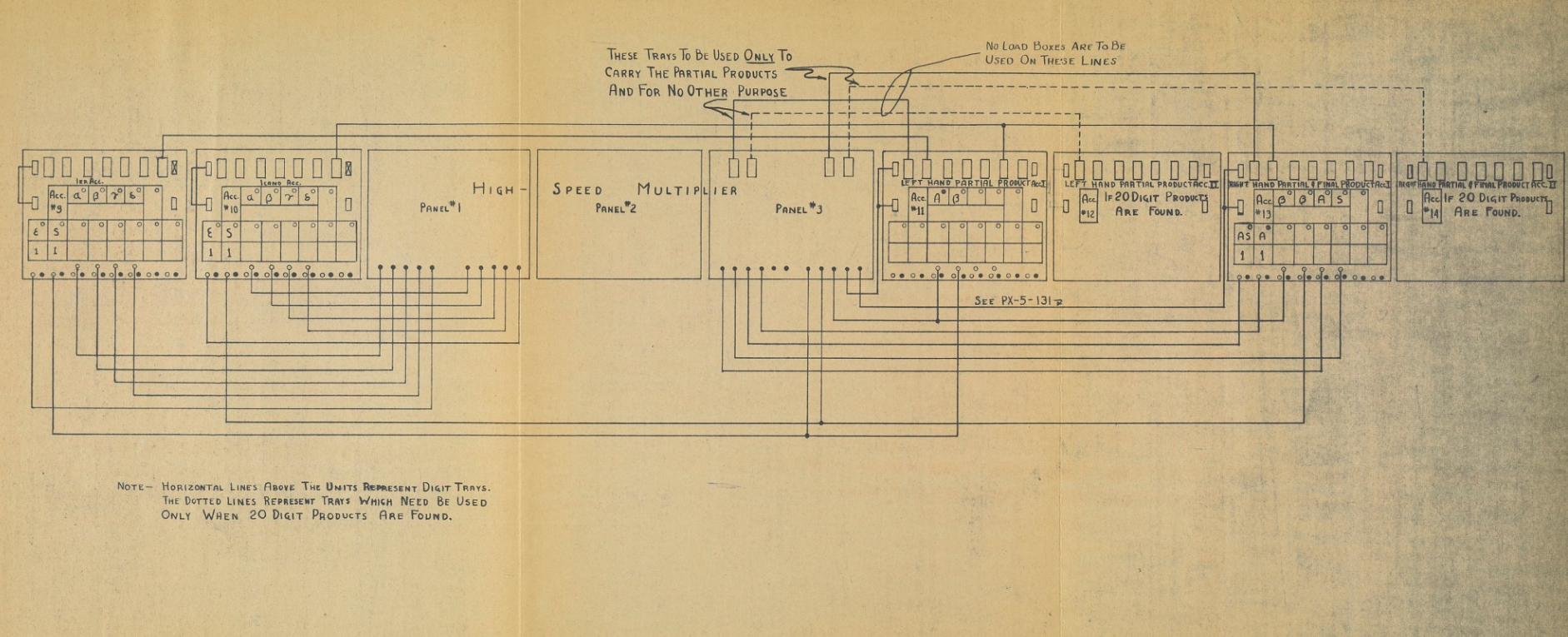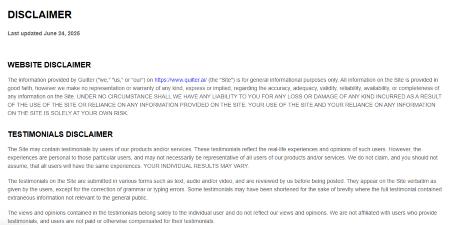What Hardware Teaches You About Leadership and Letting Go with Paul Robinson
When the product must ship, everything changes — your priorities, your systems, and your sense of control.

"Delivering on time is the only option… You didn’t cut features. You just made it work." — Paul Robinson, test and manufacturing engineering leader at Apple and Amazon
For more than 30 years, Paul Robinson helped build the backbone of some of the world’s most iconic hardware—from early Apple devices to Amazon’s Fire Phone. But when he speaks about his career, it’s not the architecture or the code that lingers. It’s the mindset. The relentlessness. The art of knowing when to hold firm and when to bend.
In an industry where precision matters and perfection is a moving target, Paul’s experience teaches a different kind of lesson: not how to make flawless products, but how to make them real. And ship them.
This is a reflection on shipping under pressure, learning from failure, building trust in teams, and what happens when engineering becomes less about the machine and more about the people behind it.

Shipping is the Only Option
Hardware engineers live with a truth that’s rarely stated plainly: the product has to leave the factory. The date isn’t a suggestion. It’s a constraint baked into the business model, the supply chain, and the shelf space already waiting for it.
“Delivering on time is the only option. And when that product left the factory and didn’t have weird hardware problems—you felt proud.”
Paul describes a world where success was measured not by internal approval but by the absence of post-launch chaos. When systems ran clean, when test logs were boring, when products shipped and customers never noticed the sleepless nights behind them—that was success.
In this world, engineers didn’t trim features. They made them work. The heroics weren’t in last-minute hacks, but in months of quiet anticipation, documentation, test coverage, and contingency planning. Real heroism, it turns out, is invisible.
When the Test is the Product
Paul’s work lived in the realm of test engineering—the backend of hardware development, where the machines that test the machines are built. But over time, test itself became a product, a system that had to function as rigorously and reliably as the devices under examination.
“We sacrificed money to make sure the product got out on time… Every unit was tested before it left the factory.”
In early development, test time was a currency. More minutes meant more coverage. But as the product matured, the goal was speed without loss of confidence. One minute on the line meant more operators, more equipment, more cost. The best test systems weren’t just accurate—they were efficient, maintainable, and scalable.
In the space between quality and throughput, Paul helped shape that balance. And often, the secret was iteration. Test systems evolved in lockstep with the hardware they evaluated, a quiet choreography between risk and confidence.
Relationships Are the Architecture
Engineers often think of architecture as the structure of code or circuitry. But Paul points to something less tangible and more crucial: the architecture of trust.
“Our closest relationships were with the EEs… Getting them involved in the test design from the beginning—that’s what made us successful.”
The best technical outcomes often hinge on early, honest conversations. Bringing a firmware or electrical engineer into the test loop early avoids costly redesigns later. But this requires something engineers aren’t always trained in: human trust.
Paul didn’t just build tests. He built bridges. He learned to approach colleagues with fully formed proposals, not vague asks. He understood how to speak the language of someone overworked and skeptical. Success, in this world, is not about knowing everything—it’s about knowing who to bring in and how to bring them along.

The Fire Phone and the Danger of Stuck Thinking
Paul has shipped triumphs. But he also lived through a well-known product failure: the Amazon Fire Phone. He speaks of it with honesty and a touch of hard-won clarity.
“The hardware was good. But the software was a disaster… We all side-loaded Android just to make it usable.”
The Fire Phone wasn’t a technical flop—it was a design philosophy problem. It carried the UI logic of the Kindle into a space that required something more fluid and responsive. What succeeded for reading books failed in the context of dynamic interaction.
“People get stuck in their designs… Just because it worked yesterday doesn’t mean it’s the solution today.”
Paul offers the Fire Phone as a cautionary tale, not of poor engineering, but of inertia. It’s a reminder that a “proven” design can become a liability when it’s applied in the wrong context. Good engineering includes the courage to rethink past wins.
Mistakes in Management
One of the most vulnerable stories Paul tells comes from his early days as a manager. Frustrated with a teammate’s unstable code, he rewrote it over a weekend. It worked. But it shattered trust.
“He was so pissed at me. It took months to repair that relationship—if I ever did.”
In technical roles, it’s tempting to solve the problem yourself. But when you lead, the “fix” is rarely the fix. The long-term solution lies in equipping others to do their best work, even if it’s slower or less elegant at first. Leadership, as Paul learned, is not proving you’re the smartest person in the room. It’s proving you trust the people in it.

You Make Your Own Luck
Paul’s career was punctuated by major opportunities—from early UAV communication systems to Apple’s manufacturing test frameworks. But he’s quick to balance humility with honesty.
“You have to make your own luck… But there’s always a right-place-right-time element. And some people don’t get that break.”
His advice isn't rooted in meritocracy mythology. He acknowledges the unseen forces of timing and access. Still, he insists that working hard, asking good questions, and showing up with solutions—not problems—makes a difference. You can’t control opportunity, but you can make yourself ready when it arrives.
Leadership as Subtraction
One of Paul’s final reflections offers a sharp insight about management:
“You only become successful as a manager if your team is better than you.”
It’s not a slogan. It’s a strategy. The best teams Paul led were ones where he felt replaceable. His ego didn’t reside in authorship but in orchestration. The goal wasn’t to prove value through personal output, but to scale excellence through others.
If you’re doing your job well, he suggests, your fingerprints disappear.
Final Thoughts
Paul Robinson’s career was not built on flashy inventions or public recognition. It was built in labs, on factory floors, in late-night emails and carefully worded diagrams. It was built in the cold logic of test frameworks and the warm challenge of interpersonal trust.
This kind of engineering doesn’t make headlines. But it makes everything else work.
If you’re building hardware, don’t just aim for elegance or genius. Aim for reliability. Aim for clarity. Aim for the kind of leadership that leaves no trace except a team that knows what to do, when it matters most.
So here’s the challenge, if you’re still reading: This week, spin something. Build something. Show someone the messy version. Make a decision that moves your product forward—even if it’s not perfect. Especially if it’s not perfect.
Get to the bench. Start the conversation. And if you’re lucky, you’ll get to work alongside people like Paul—who make the process better just by demanding that we build like we mean it.
Hardware Rich Development is a series from Quilter.ai that explores what it means to build high-integrity hardware in a fast-moving world. If you’re leading an engineering team or driving technical decisions in your organization, and you’d like to share your insights, reach out.
We’re building a community around better hardware thinking.


